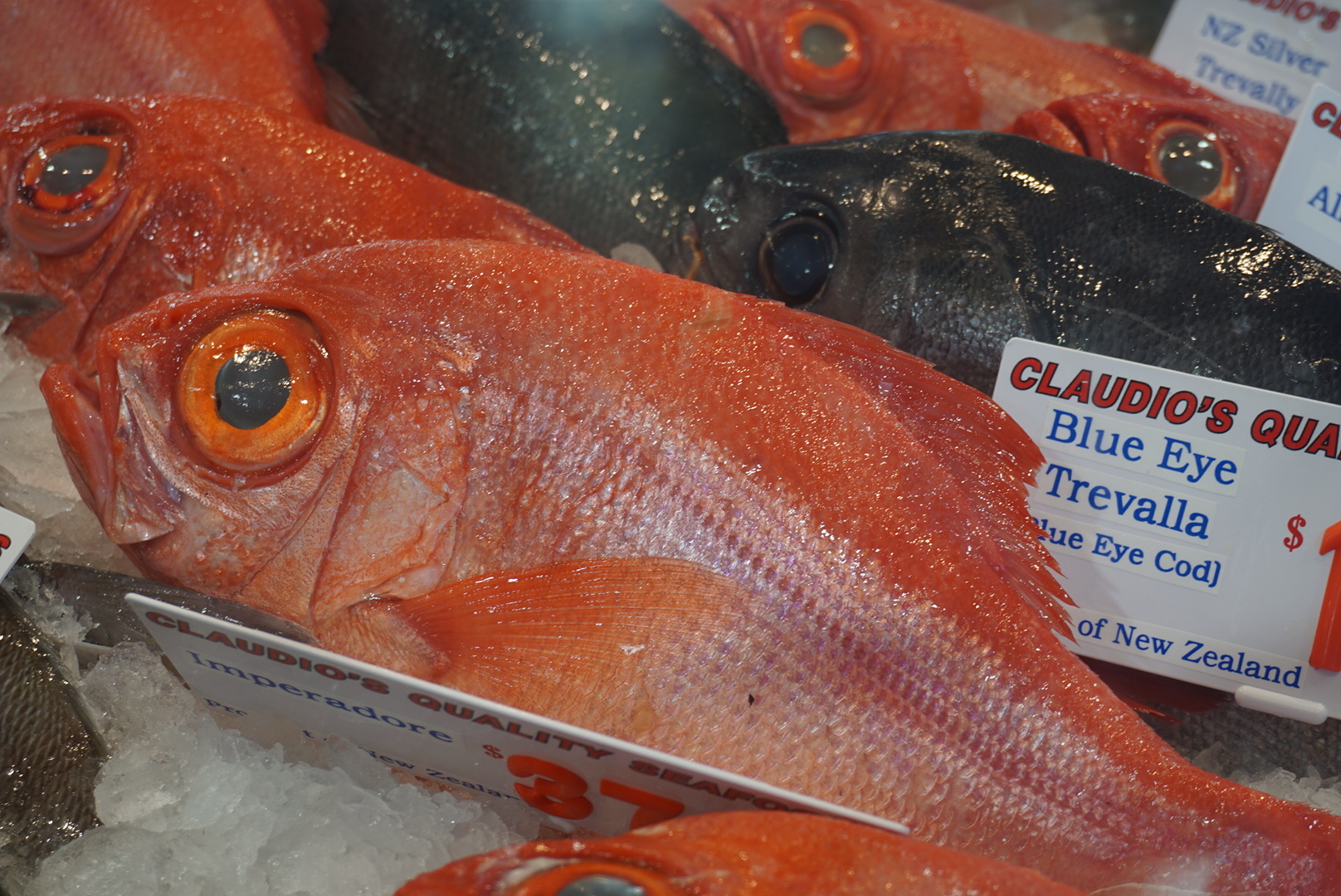
Imperadore fish is called nanyo kinmedai (南洋金目鯛) in Japanese, and winter is the best season to eat it. For our Washoku Lovers Seafood Guide, I regularly visit the Sydney Fish Market to find out what’s in season. Going often means I get to meet skilled chefs there, such as Chef Miura from Rosan and a Chef Oe from Masuya, in the early morning. They come to the Fish Market every day!
Chef Miura says “even if the seafood company delivers fish to my restaurants, I would like to choose the best quality fish”. What is the “best” quality fish? He knows what indicators to look for. I asked him what fish I should buy in the middle of September and he answered imperadore fish!
Don’t forget to check out our Seafood Guide to get all the information you need not only about this fish, but many others!
Imperadore and alfonsino fish both look very similar, but differ in taste and the price almost doubles for the imperators. Imperadore fish was $37.99 per kilo, and the alfonsino was $21.99 per kilo. I bought one Imperadore fish which ended up costing $70 per fish!
Chef Miura and I went to Rosan together where he taught me how to prepare the imperadore. He says there’s not a single part of the fish you should throw away, all of it can be used or eaten! But how? Let’s go through it!
Chef Miura taught me to look for clear eyes and a beautiful body when selecting a fresh fish, but most importantly they need to be fat along the back, shoulder and belly.
First of all, he removed the guts. This is good to eat as shuto which means “sake thief” and is derived from the fact that it is a good side dish for sake.
Then the head was cut off and then cut in half like the picture below. These are good for kabuto-ni which is a dish of simmered fish heads.
From there, separate the body into three pieces, separating the spine and bones from the fish.
Saku is a Japanese word that describes the part of the fish that’s good for sashimi. We cleaned up the bones and cut the flesh into saku. Each of these pieces will be cooked in different ways.
As Chef Miura said, don’t throw anything away! Even bones can be used to make a delicious dashi broth.
He showed me how to use the skin of the fish too. I was very surprised to taste how delicious the skin was! More details are coming in the seafood guide.
Thanks to the great tip, Chef Miura from Rosan.